Growing up in middle-class Melbourne in the 1980s and 1990s, it was uncommon to see families living in apartments.
Only one of my friends at primary school lived in a ‘flat’, and he was an only child to a single mum.
Everybody else lived in a detached house with a backyard (including another mate with a single mum).
Much has changed over the past 30 to 40 years, as it will over the next 40.
Purchasing a detached house with a backyard is becoming a luxury, while high-rise apartments have mushroomed across the major capital cities as the population has swelled and housing has become increasingly unaffordable:
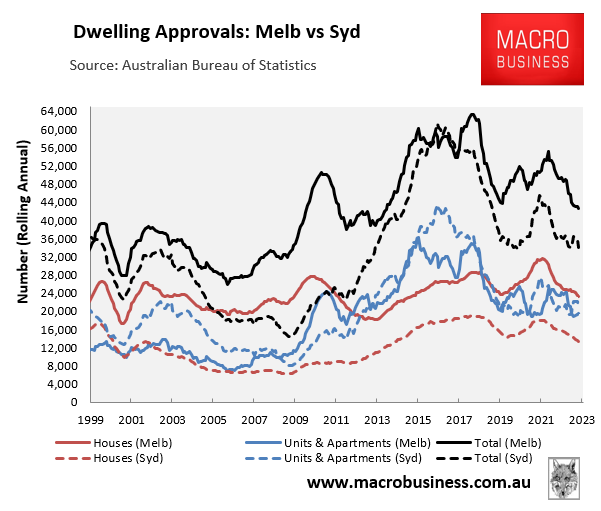
In fact, pre-pandemic modelling from the Urban Taskforce projected that Sydney’s housing composition will be fully transformed into high-rise by mid-century:

It is a massive structural change that was never envisaged when I was growing up.
The capital city rental vacancy rate collapsed to an all-time low of just 1.0% in September and rents are rising far quicker than incomes:
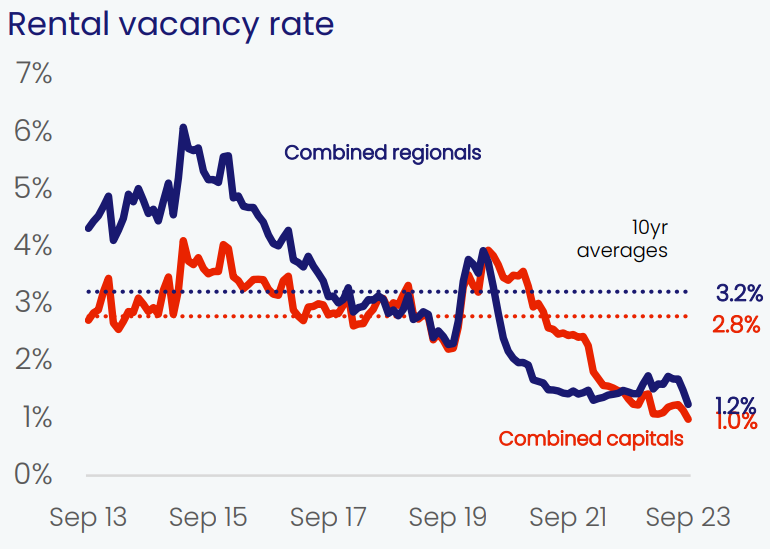
Source: CoreLogic
As a result, more Australians are being forced to live in group housing and homelessness is soaring.
Flatmates.com.au, the nation’s largest share house website, has seen a near doubling of people seeking share housing.
National Shelter likewise reported a 50% increase in homelessness since 2020 and a 103% increase in people living in “improvised homes” and “rough sleeping”:
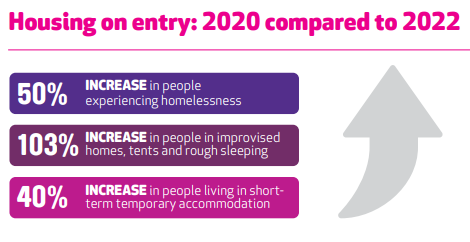
With many Australians struggling to purchase or rent even a shoe-box apartment, granny flats are again being touted as a way to solve the nation’s housing shortage:
“New analysis of all residential properties across Australia’s three largest capitals has identified more than 655,000 sites suitable for the construction of a granny flat, offering a solution to help ease the housing shortage”, CoreLogic reports.
“Sydney is home to the most granny flat development opportunities with around 242,000 suitable properties, representing 17.6% of the metro region’s housing stock”.
“Melbourne has almost 230,000 potential sites, representing 13.2% of stock, while Brisbane has almost 185,000 suitable sites, representing 23.3% of houses across the metro region”.
“NHIFC forecasts indicate the national housing market is likely to be undersupplied to the tune of 106,300 dwellings over the next five years”, CoreLogic’s director of research, Tim Lawless said.
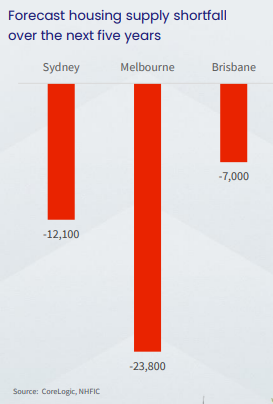
“For policy makers and government, granny flats present an immediate and cost-effective opportunity to deliver much needed housing supply within existing town planning guidelines”.
“For homeowners, the addition of a second self-contained dwelling provides an opportunity to provide rental housing or additional accommodation for family members, while at the same time, increasing the value of their property and potentially attaining additional rental income”.
Of course, the reality is that housing demand through population growth is easily outpacing the nation’s ability to supply homes, as illustrated below:
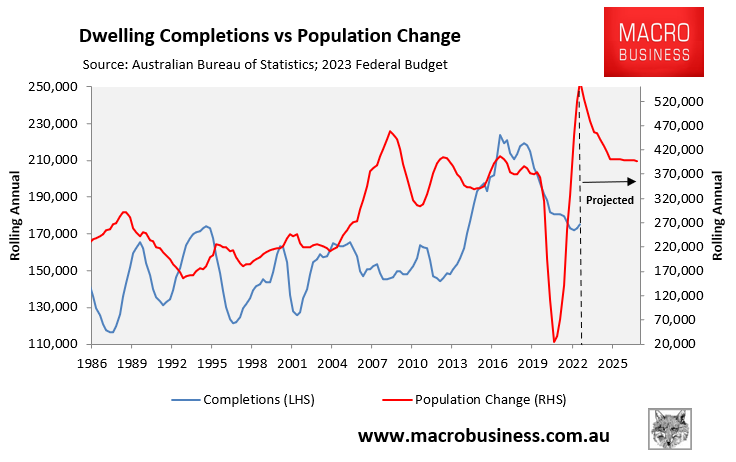
Therefore, while granny flats can put a band-aid over the problem, the first best solution requires the federal government to stem the flow of migrants to a level that enables the supply of housing and infrastructure to catch-up.
Future generations of Australians should not be forced to live in high-rise shoe box apartments or ‘tiny home’ granny flats.
However, such living arrangements will become the norm if the federal government continues to grow the population like a science experiment via mass immigration.

